Rod-cone crossover connectome of mammalian bipolar cells
- PMID: 27447117
- PMCID: PMC5823792
- DOI: 10.1002/cne.24084
Rod-cone crossover connectome of mammalian bipolar cells
Abstract
The basis of cross-suppression between rod and cone channels has long been an enigma. Using rabbit retinal connectome RC1, we show that all cone bipolar cell (BC) classes inhibit rod BCs via amacrine cell (AC) motifs (C1-6); that all cone BC classes are themselves inhibited by AC motifs (R1-5, R25) driven by rod BCs. A sparse symmetric AC motif (CR) is presynaptic and postsynaptic to both rod and cone BCs. ON cone BCs of all classes drive inhibition of rod BCs via motif C1 wide-field GABAergic ACs (γACs) and motif C2 narrow field glycinergic ON ACs (GACs). Each rod BC receives ≈10 crossover AC synapses and each ON cone BC can target ≈10 or more rod BCs via separate AC processes. OFF cone BCs mediate monosynaptic inhibition of rod BCs via motif C3 driven by OFF γACs and GACs and disynaptic inhibition via motifs C4 and C5 driven by OFF wide-field γACs and narrow-field GACs, respectively. Motifs C4 and C5 form halos of 60-100 inhibitory synapses on proximal dendrites of AI γACs. Rod BCs inhibit surrounding arrays of cone BCs through AII GAC networks that access ON and OFF cone BC patches via motifs R1, R2, R4, R5 and a unique ON AC motif R3 that collects rod BC inputs and targets ON cone BCs. Crossover synapses for motifs C1, C4, C5, and R3 are 3-4× larger than typical feedback synapses, which may be a signature for synaptic winner-take-all switches. J. Comp. Neurol. 527:87-116, 2019. © 2016 The Authors The Journal of Comparative Neurology Published by Wiley Periodicals, Inc.
Keywords: RRID AB_2341093; RRID AB_2532053; RRID AB_2532055; RRID AB_2532057; RRID AB_2532059; RRID AB_2532060; RRID AB_2532061; RRID SCR-002937; RRID SCR-008606; RRID SCR_001622; RRID SCR_005986; RRID SCR_008394; amacrine cells; cone vision; connectomics; networks; retina; rod vision; synapses; transmission electron microscopy.
© 2016 The Authors The Journal of Comparative Neurology Published by Wiley Periodicals, Inc.
Conflict of interest statement
REM is a principal of Signature Immunologics, Inc., manufacturer of some antibodies used in this study.
Figures

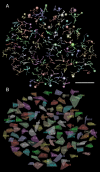
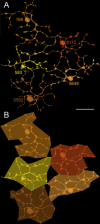


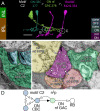





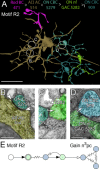
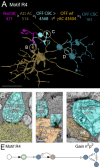
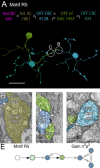

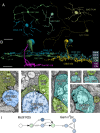

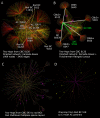

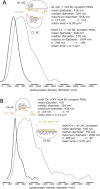
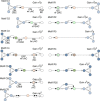

References
-
- Aguilar M, Stiles WS. 1954. Saturation of the rod mechanism of the retina at high levels of stimulation. Opt Acta (Lond) 1:59–65.
-
- Alpern M. 1978. The eyes and vision In: Driscoll WG, Vaughn W, editors. Handbook of optics, 1st ed. New York: McGraw‐Hill; p 12–21.
Publication types
MeSH terms
Grants and funding
LinkOut - more resources
Full Text Sources
Other Literature Sources
Miscellaneous

